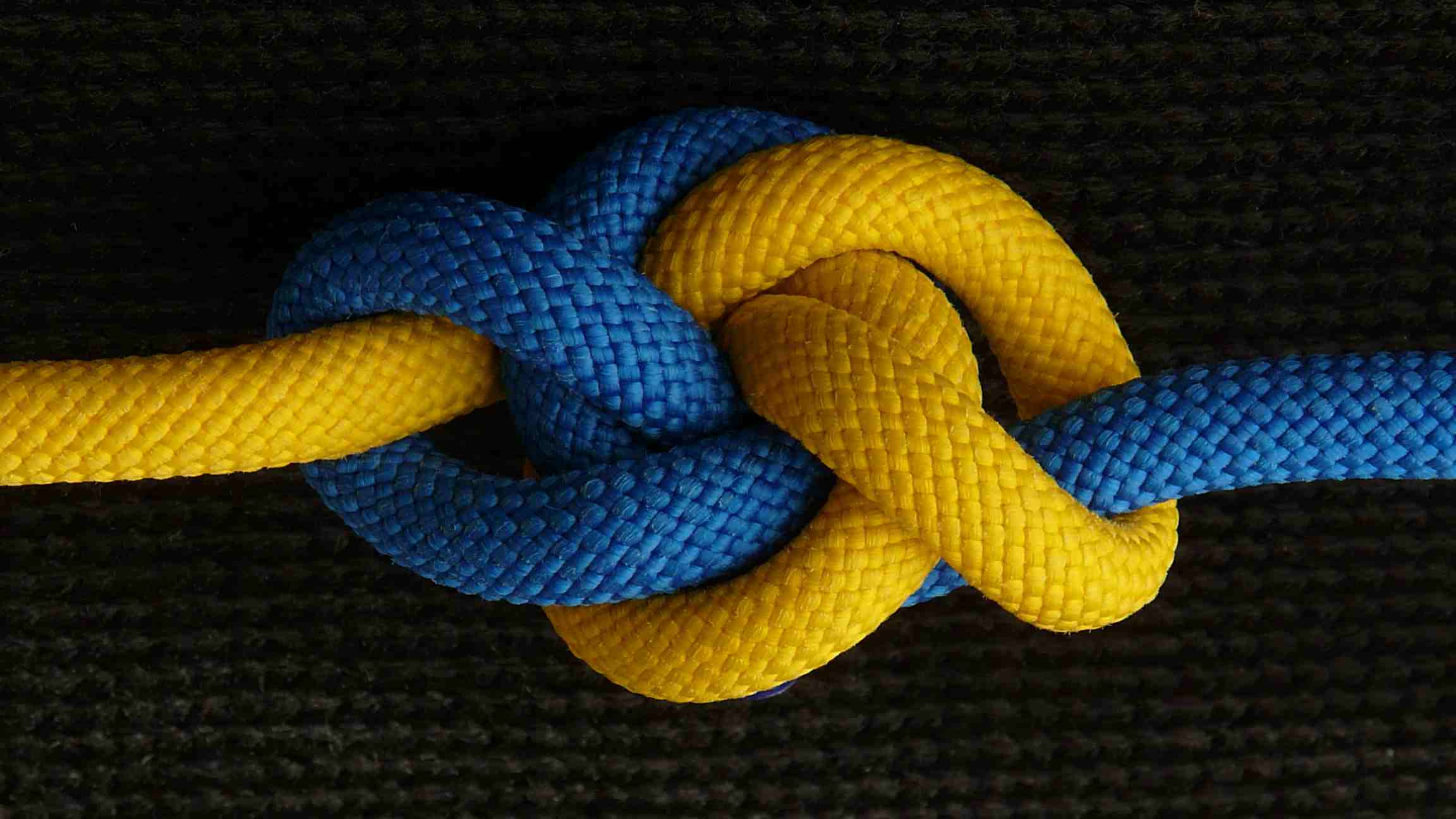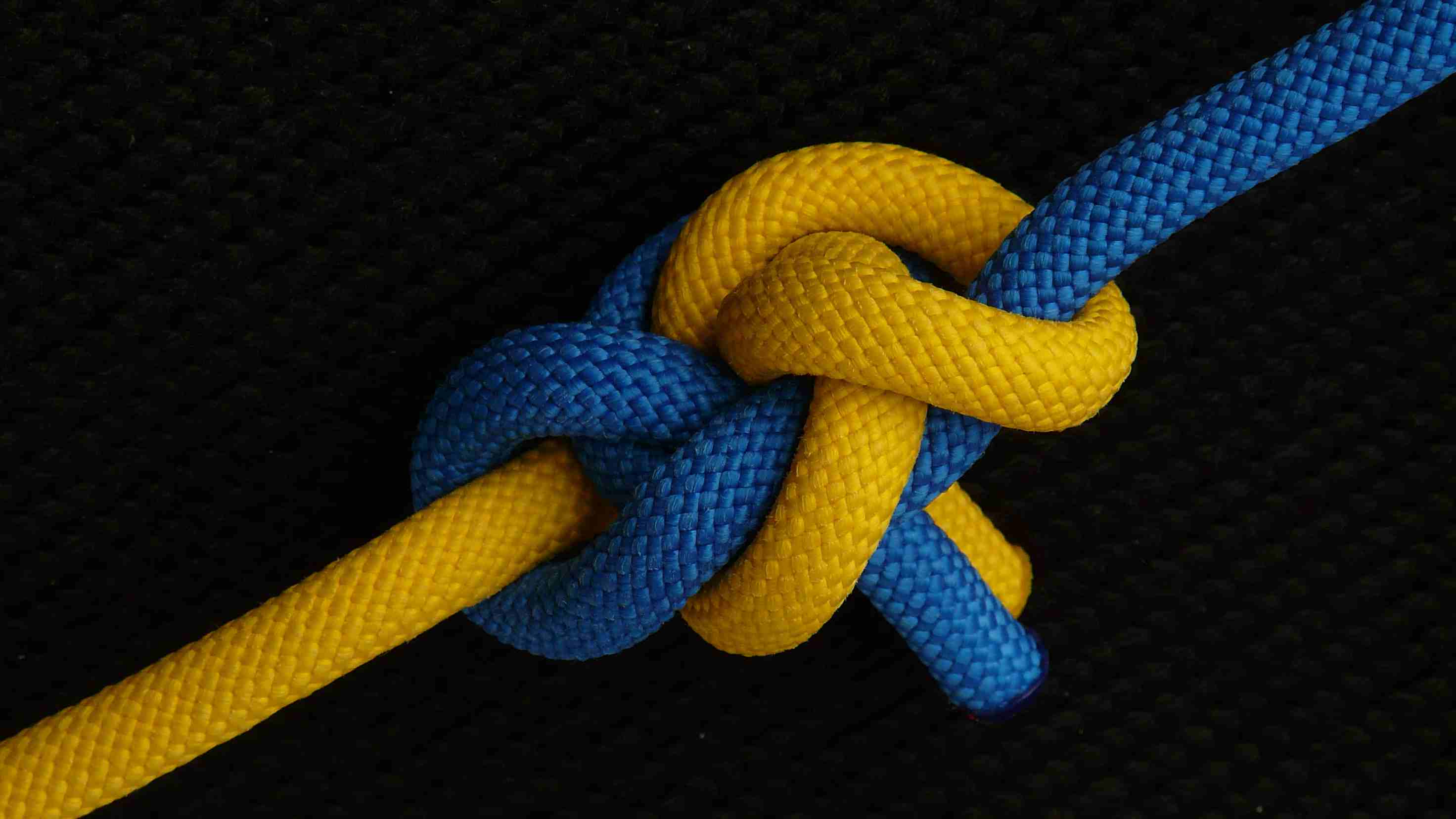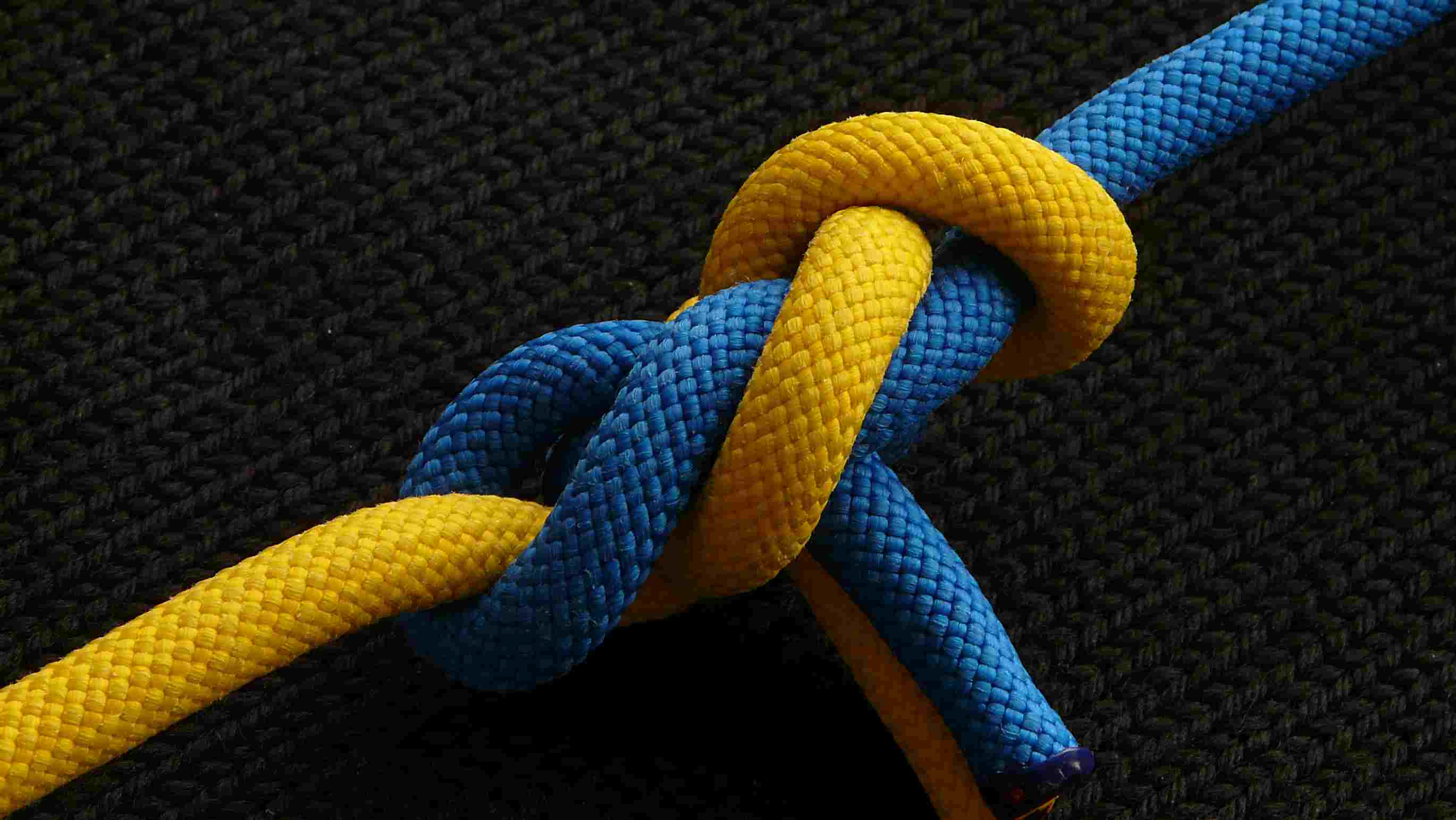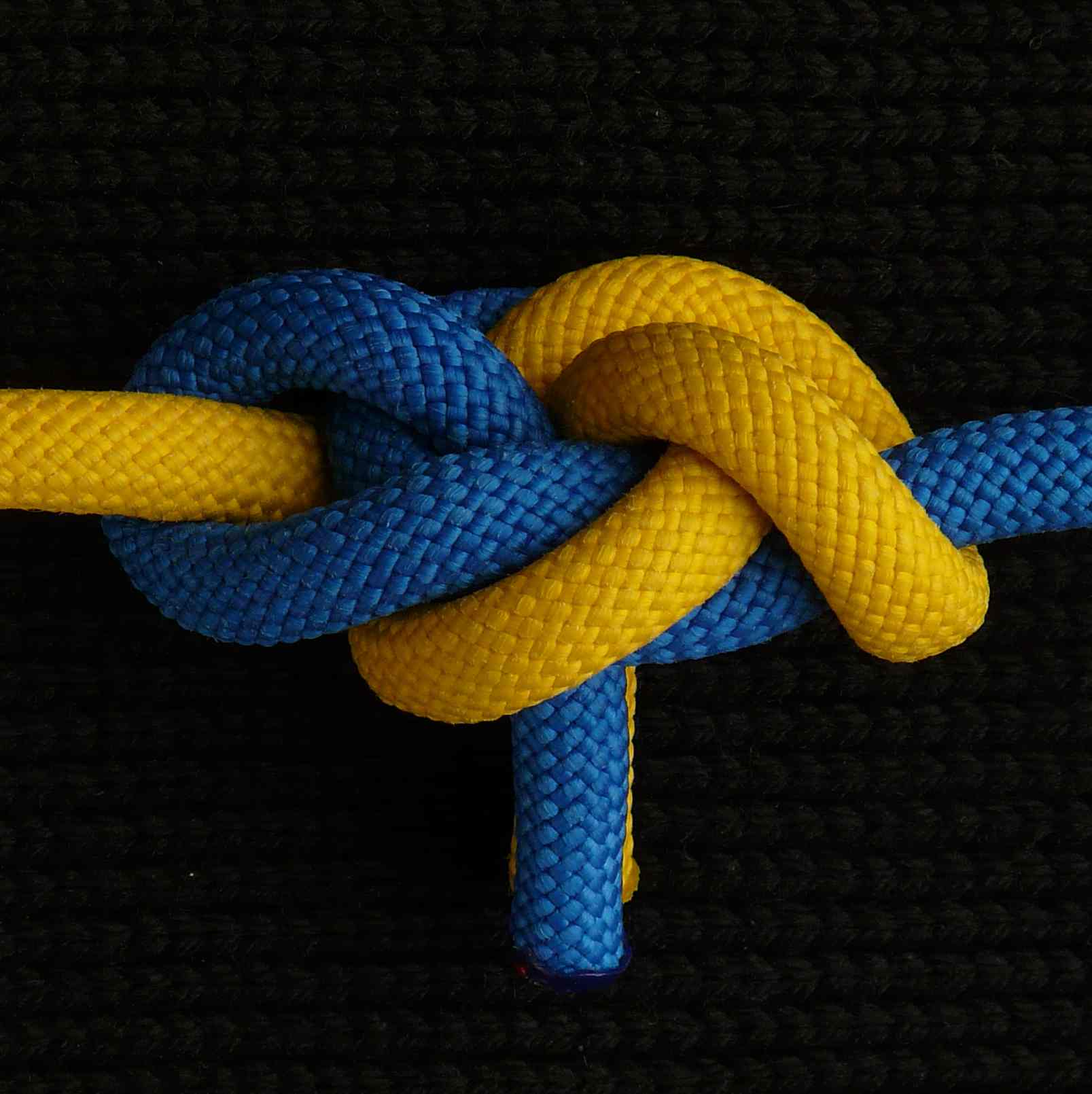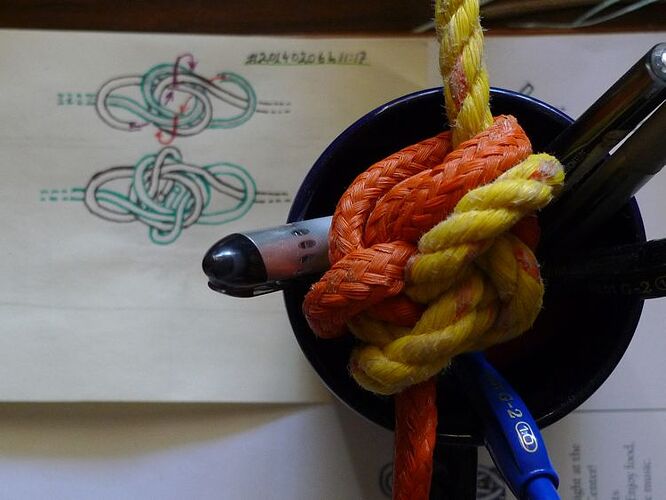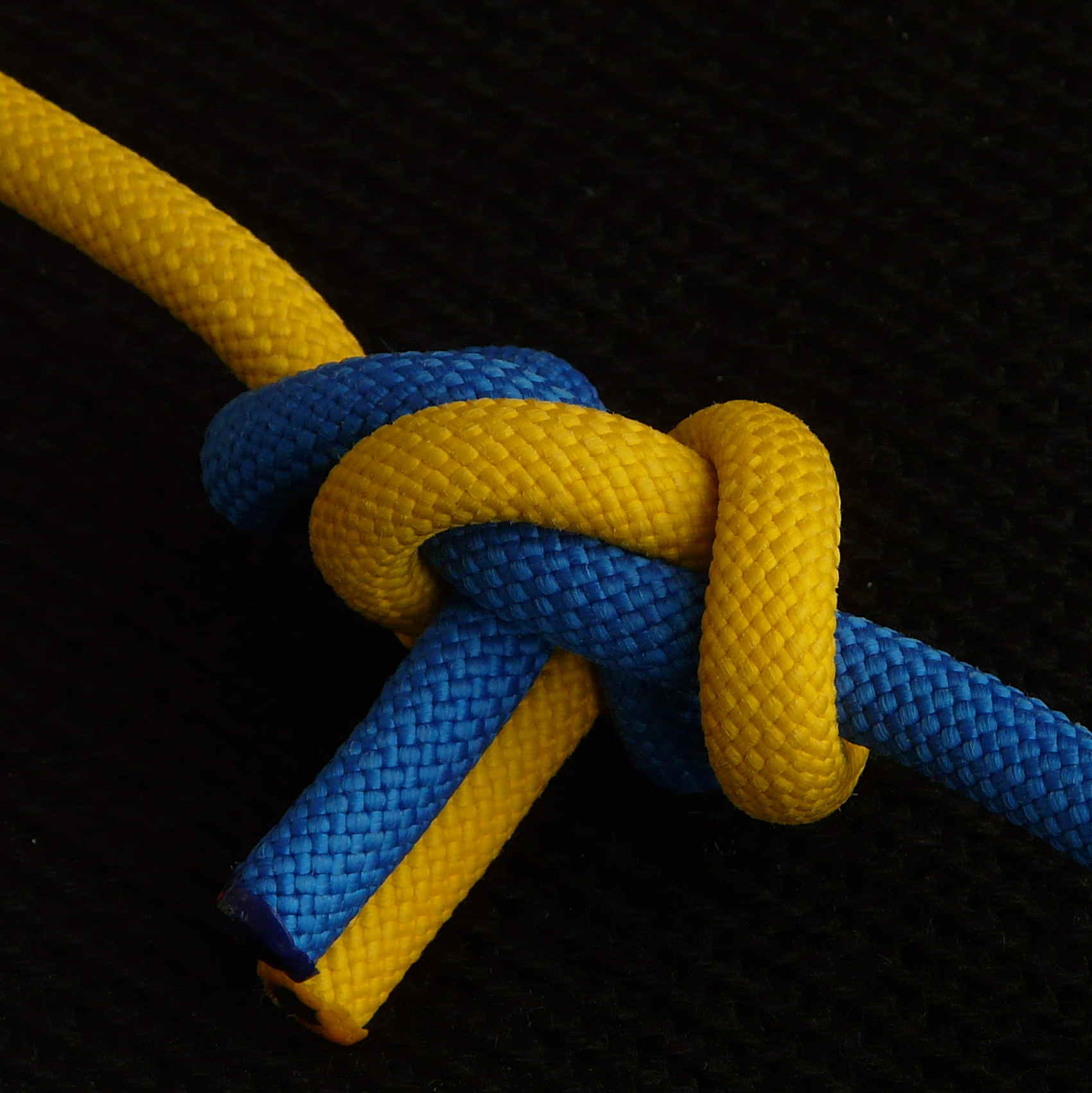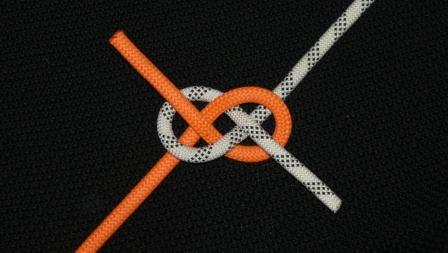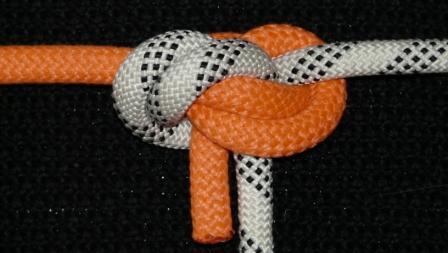Speaking only about the un-re-tucked bend shown in this thread ( which, somehow, “resembles” the Ashley s bend, that is true, but which is topologically different = its links are topologically equivalent not to the overhand knot, but to the unknot, as one can see in a glance ), I wish to point out that it is just one click simpler to tie than the re-tucked alt. Carrick bend tied by allene, and just one click more complex than the “parent” Ashley s bend (*). Personally, I do not like those bends where the tails are hanging between the legs of the Standing ends like this - but it is only a matter of taste, I guess. ( However, in this particular bend, the fact that the pairs of the continuations of the Standing and Tail ends have the same orientation, may be proved beneficial, as the author of the bend has noticed ). Also, although the entangled intestines of this over-bowled bend are not overhand knots, one can consider this topology not as a disadvantage ( the Standing parts are already over-convoluted ), but as an advantage, in comparison to the Ashley s bend - because it can be utilized to tie the PET corresponding eyeknot, if this will be ever needed. ( Eyeknots do not slip as easily as their corresponding end-to-end knots, so I believe that the additional security of this bend would be an overkill ).
I had not the motive to show, among their simpler relatives, the first-collared-then-retucked ( though the central opening ) knots, based on the re-tuckings of a Carrick-like “base”, in (1) :
http://igkt.net/sm/index.php?topic=3086
At that time, I had to confront somebody who tried to teach me English ( his English, to be more precise…), so me, the poor third world native would become able to understand his suggestion to move those bends to the Fancy and Decorative knotwork Forum  :).
:).
Using the labels suggested in the above cited thread, that can describe the path of the Working end in all those bends generated by the re-tucking of this Carrick-like"base", I would had described this bend as uSE C - uSE C ( under the Standing End, re-tucked through the central ( C ) opening ). See the oSE C - oSE C, at (2), already mentioned AND shown at (3) - but it seems nobody listens to pictures ! 
The nipping mechanism may be seen more surrounding, but I am not sure that it would be more constricting. Apparently, a surrounding, more O-shaped nipping loop seems a safer bet than a one-sided, more U-shaped one - but is it ? We have seen exactly the same situation in the case of the “Link bowlines”, and my impression was that the surrounding rims can actually “protect” the penetrating Tail ends, not choke them ! The added material tends to form a halo that can act as a shield, and absorb some of the nipping forces, before they reach the Tail ends at the core of the knot. Some portion of the nipping forces and the friction they induce would be distributed and absorbed within the contact areas of the two embraced O-turns, and they will never reach to their final destination, the penetrating Tail ends. Moreover, as the contact areas between the rims of those interlocked O-turns and the Tail ends are now more extended, the local deformation of the strands are less pronounced, less deep. The rims of the O-shaped nipping turns may be less able to bite hard and deep into the body of the Tail - so these Tails can slide out of the core more easily.
Why I do not speak about the re-tucked version of this bend ?
First, because there are dozens and dozens of re-tucked simple bends ( even much simpler than this ) that we have not tied. Many of the simpler, un-re-tucked bends incorporate locking mechanisms most knot tyers have never examined, and perhaps have never tied, or even seen. I think it is more prudent to start from the simpler bends and go to the more complex ones, otherwise we will shift the goalposts each time something catchy pops out.
Second, because there are many ways one can re-ruck a bend, because the already formed base knot has many openings through which we can drive our Working end. The re-tucking-through-the-central-opening may even be inferior to others, because we do not know if it is better to confront slippage with the Tails as a pair of adjacent and parallel segments of rope, or as two segments going through different openings. So, we have first to test the un-re-tucked bend, and all the un-re-tucked simple bends we know, and only then run to take refuge under the shirts of this or that re-tucked fat lady s dress… Otherwise the proprosal of a re-tucked bend may reveal that we are not sure about the mechanism we proprose, so we buy some insurance premium !
Third, because re-tucked knot hasn’t interested me enough to venture into its tying. The re-tucked bends may be more secure ( and we do not even know if this security is worth the added material, i.e., if they are more secure proportionally to the added material and to the added tuck …), but they are NEVER more pretty ! They often become too fat, and they acquire a wide cross section that makes them unsuitable for many applications. With knots, if we do not follow the “Less is More” dictum as far as it can get us, we better start seizing, splitting, gluing, etc…
- http://igkt.net/sm/index.php?topic=3086
- http://igkt.net/sm/index.php?topic=3086.msg18725#msg18725
- http://igkt.net/sm/index.php?topic=4756.msg30891#msg30891
( * ) The classic or alternative Carrick mat is one tuck more complex than this particular Carrick-like “base” / mat.
